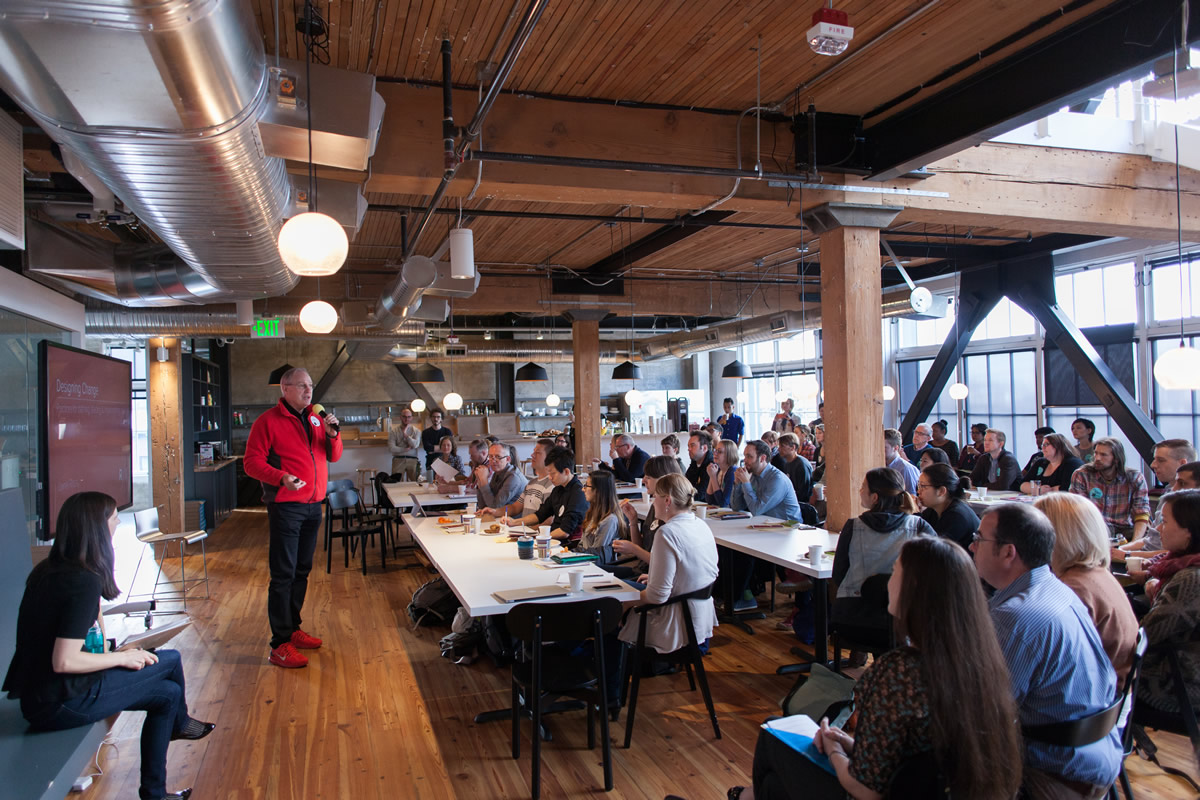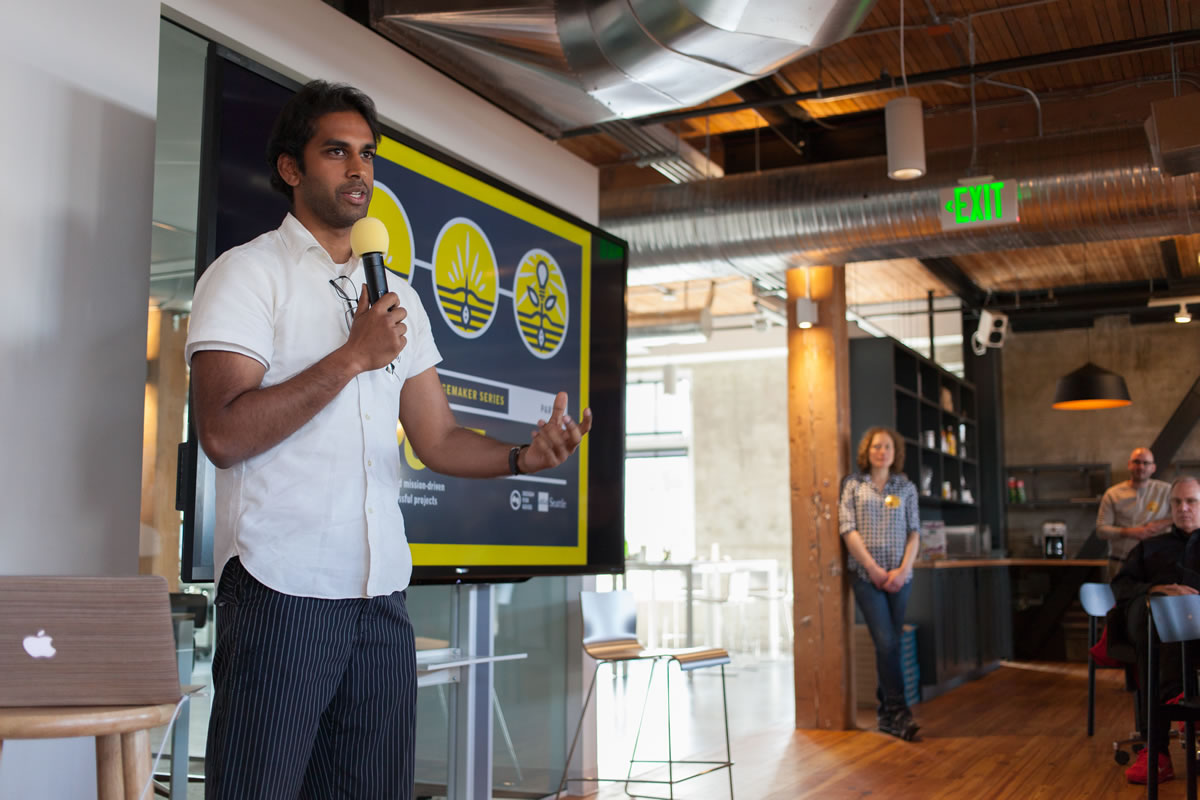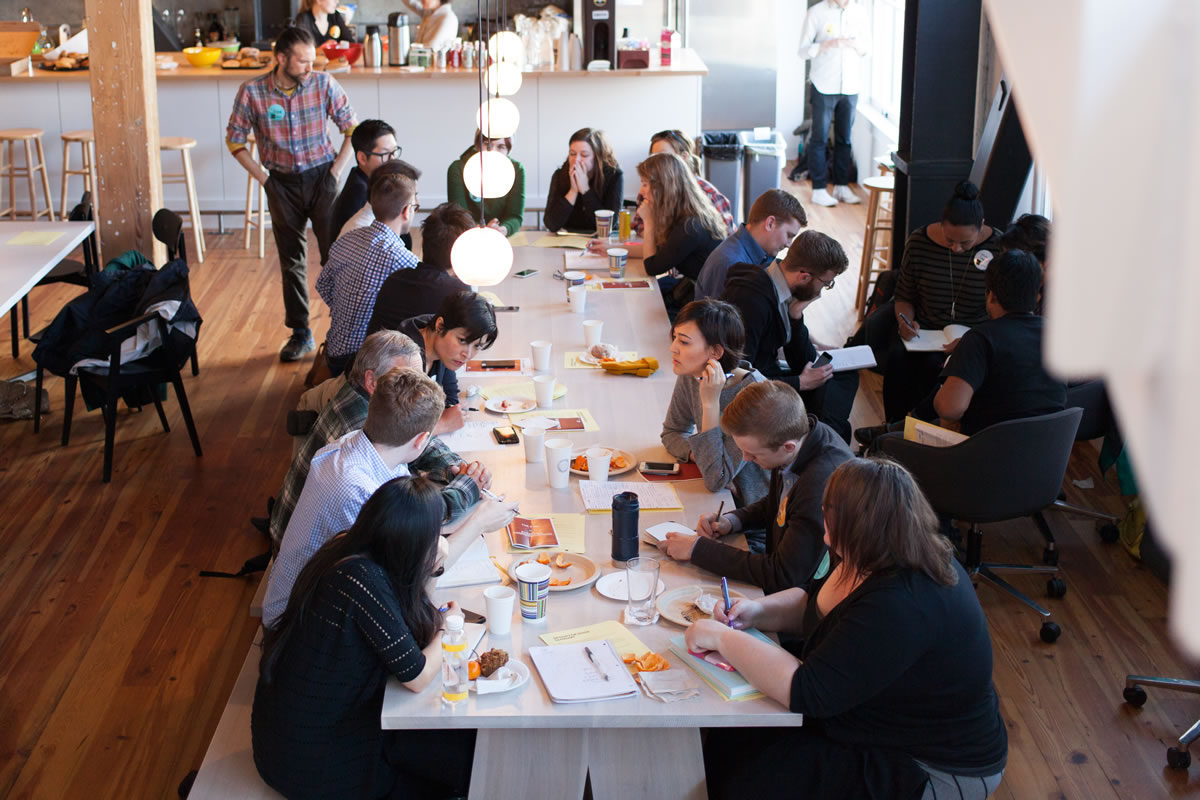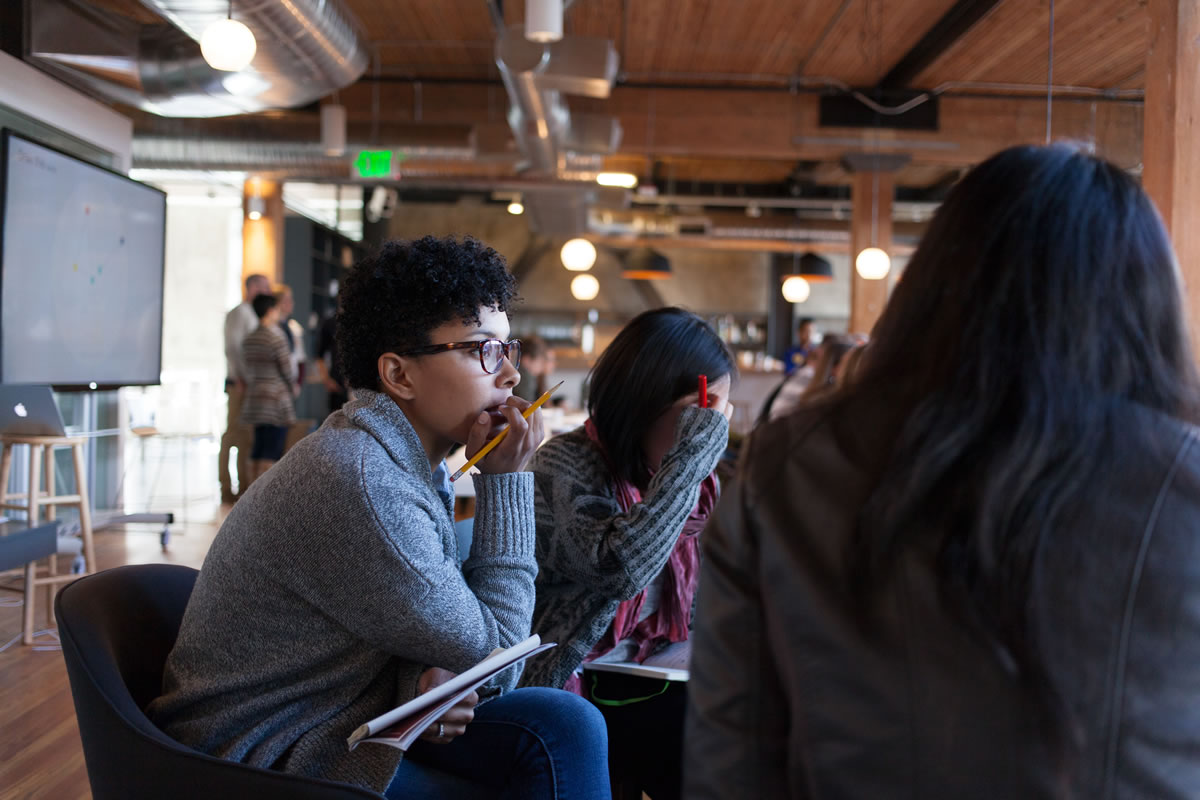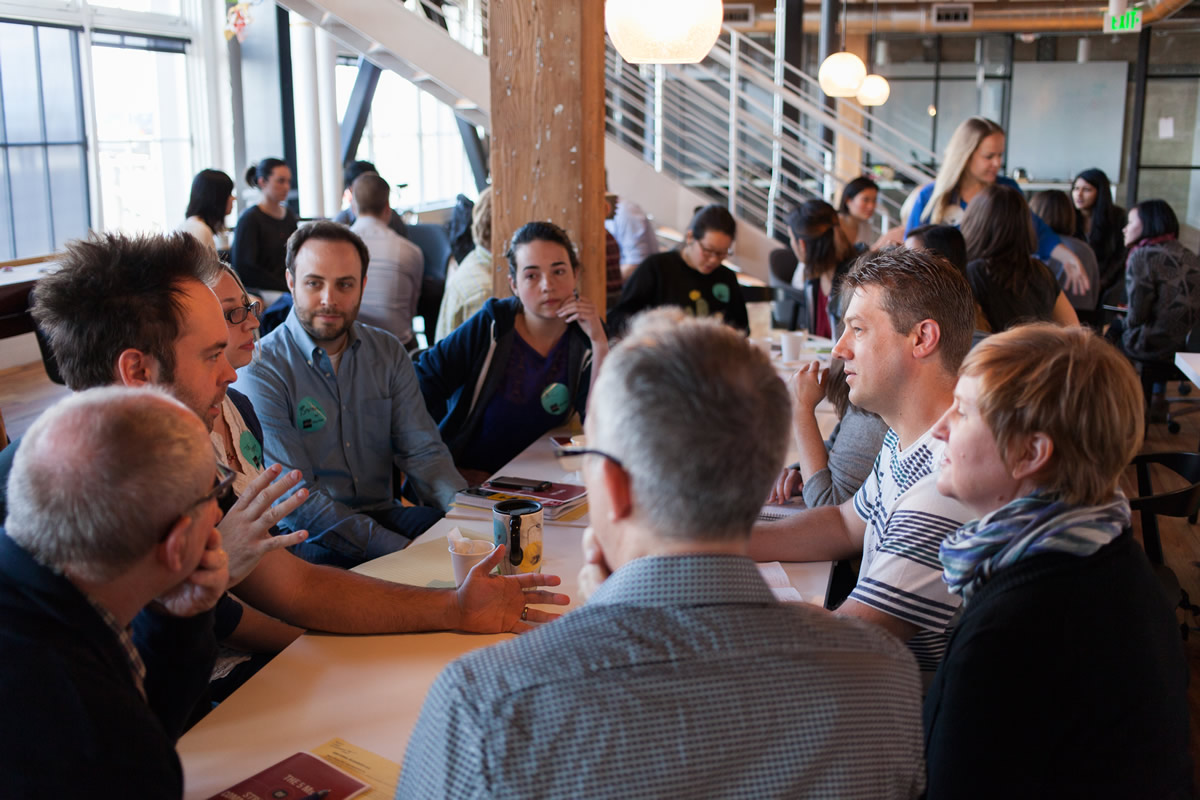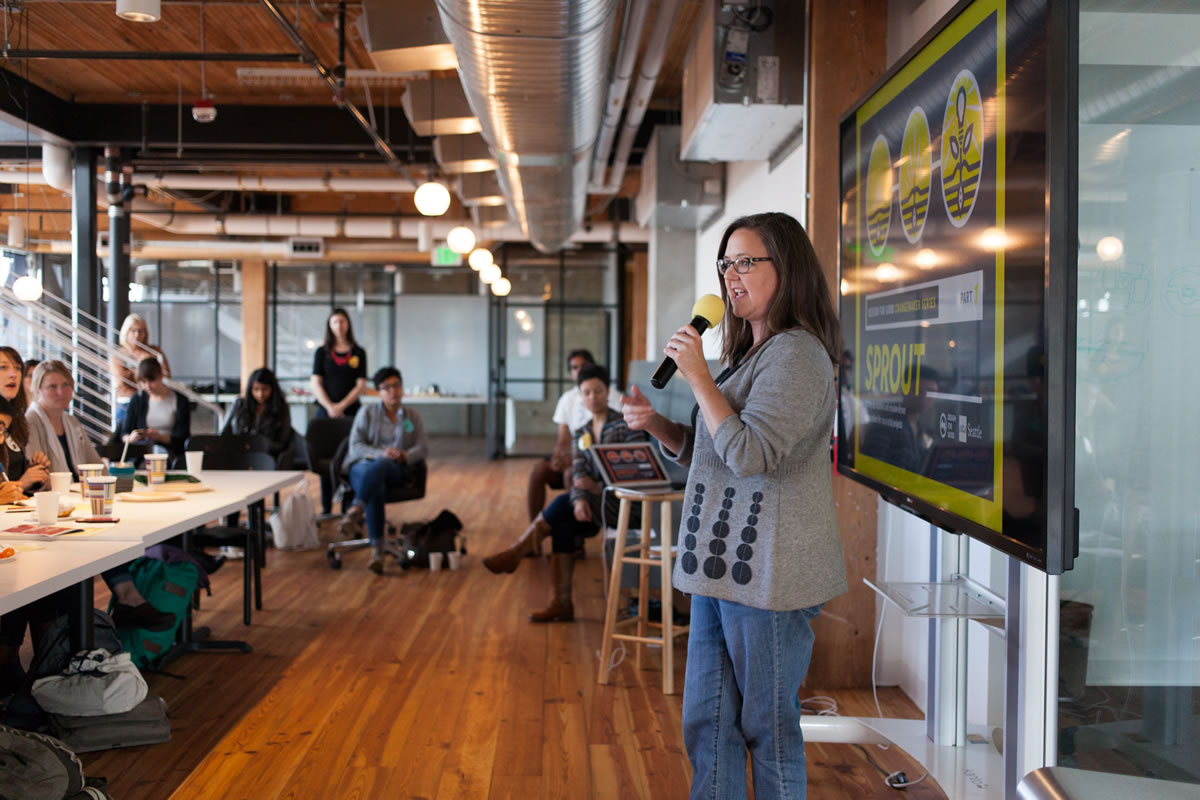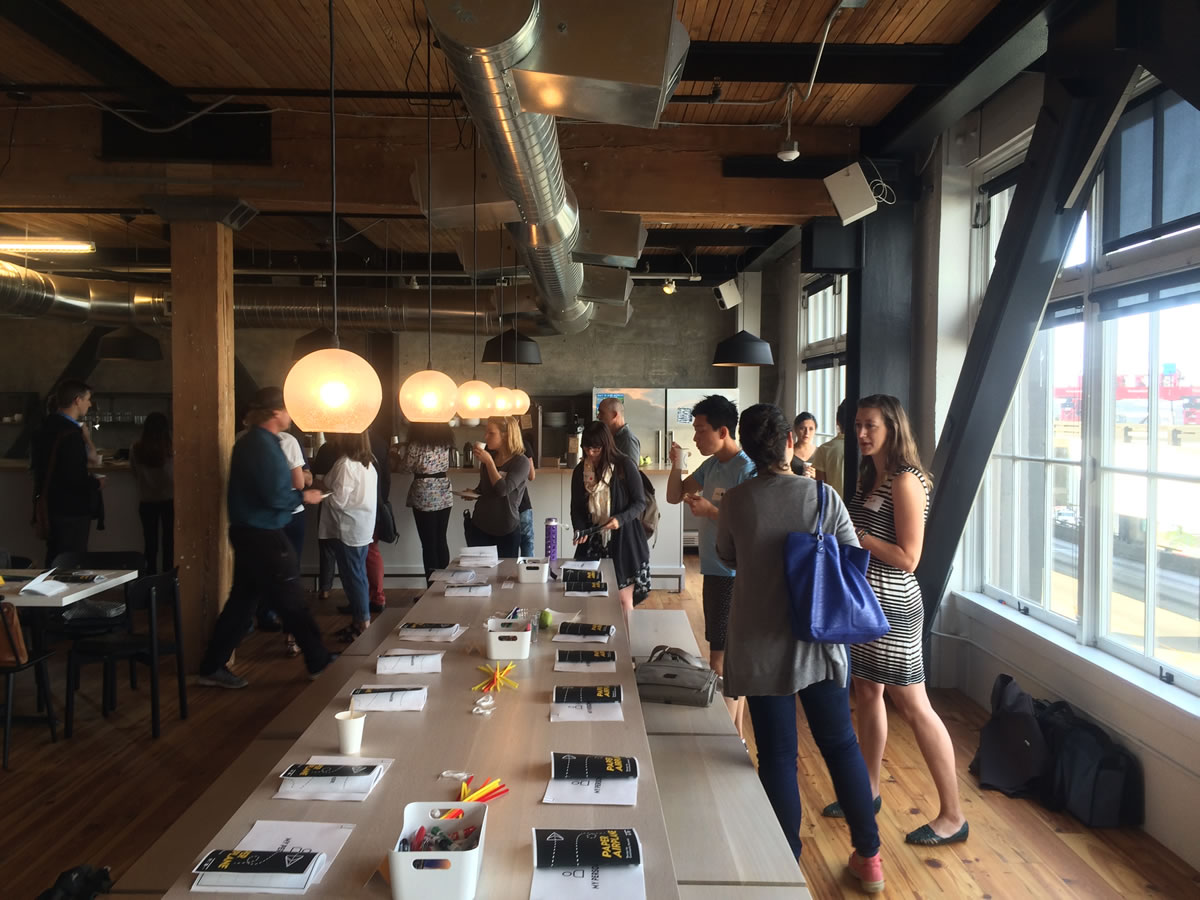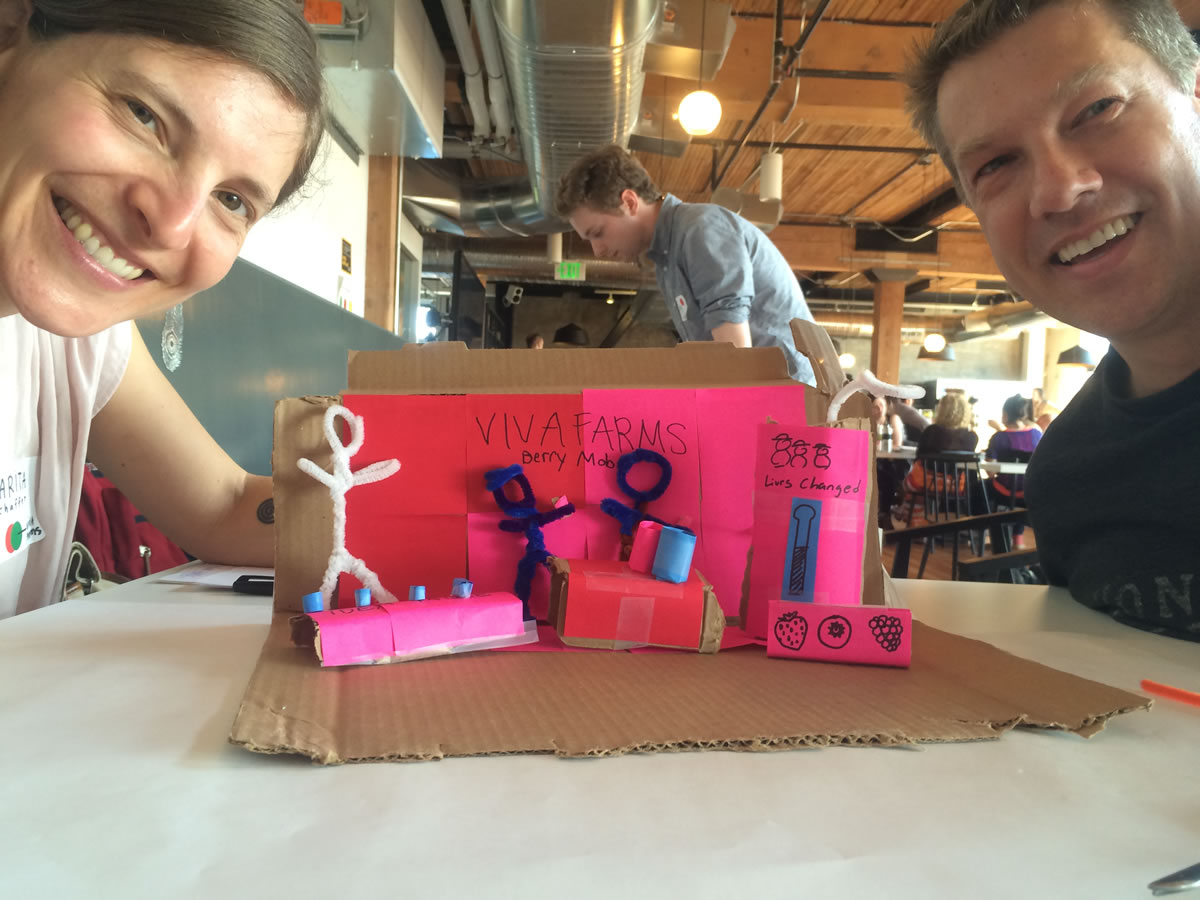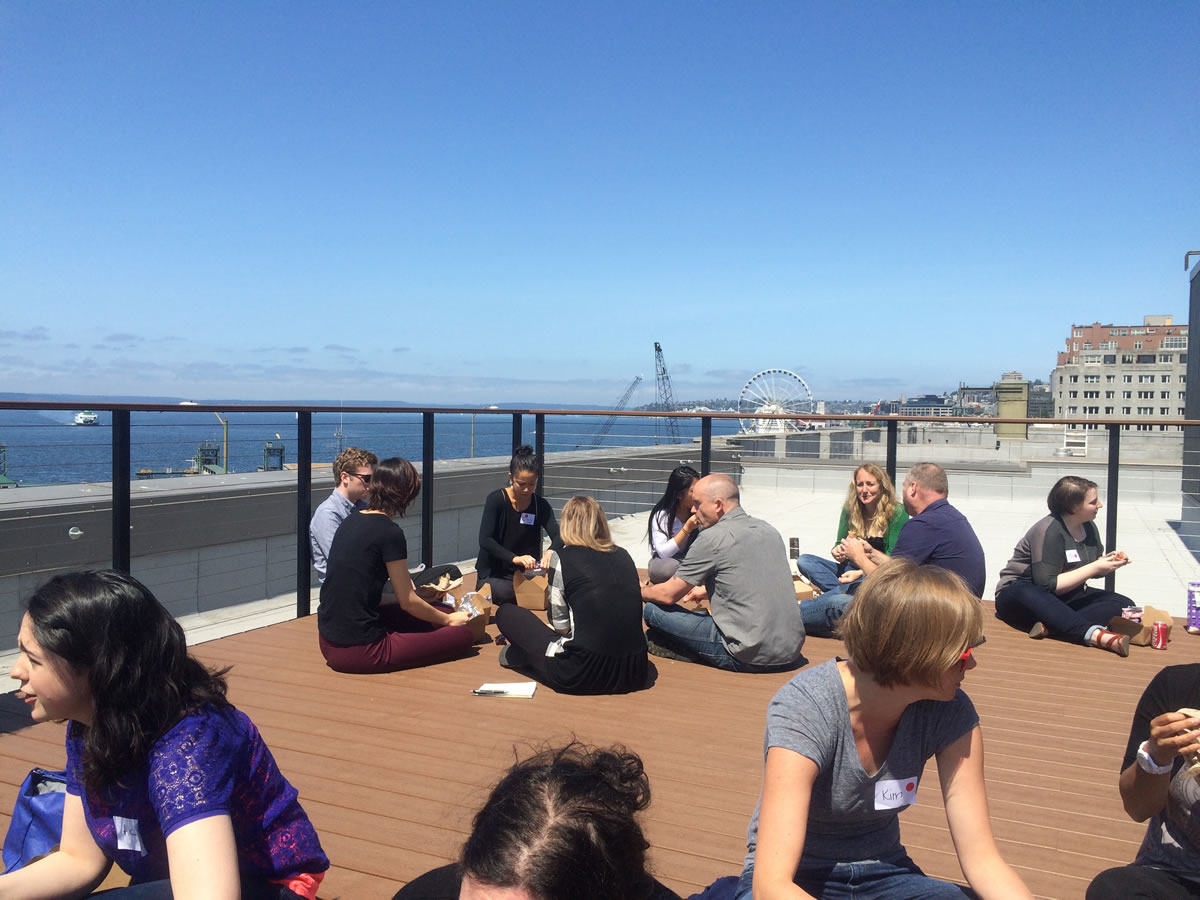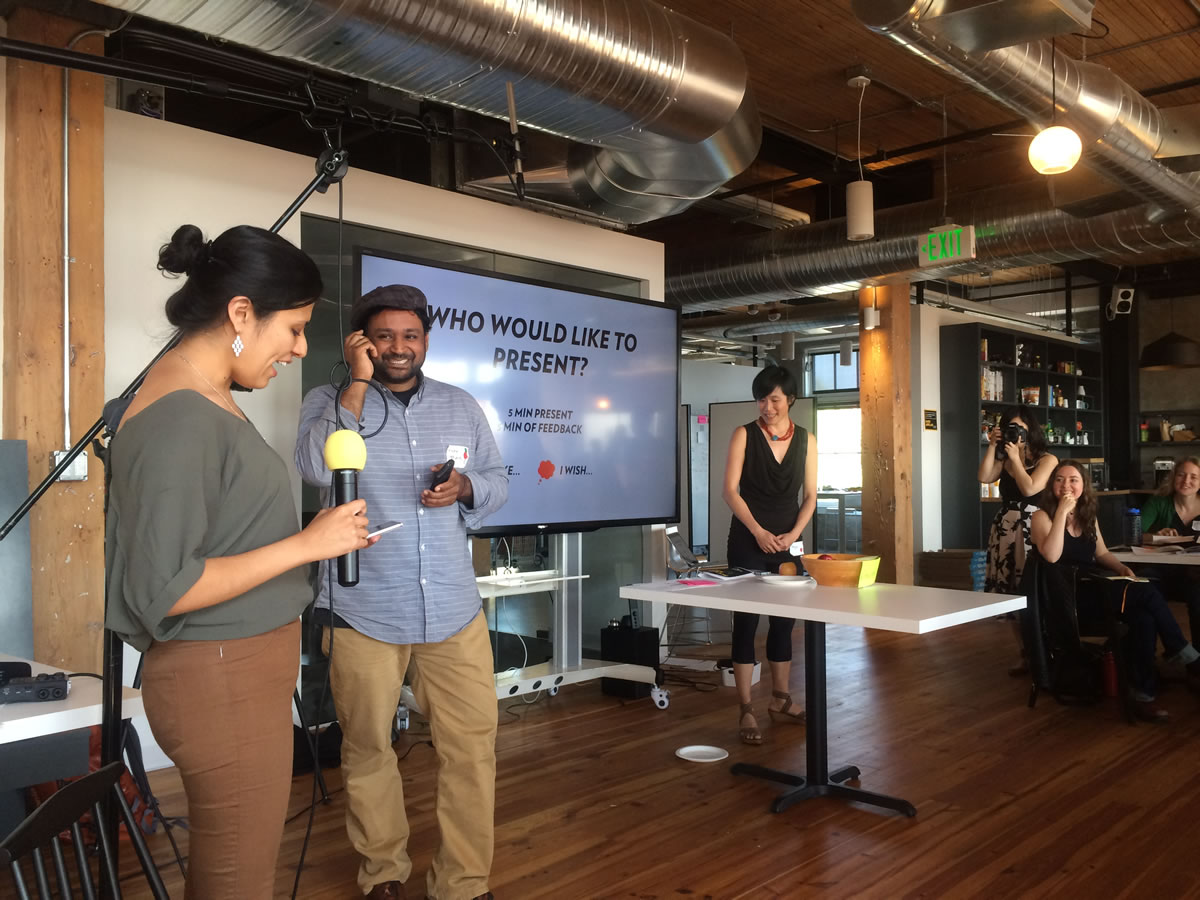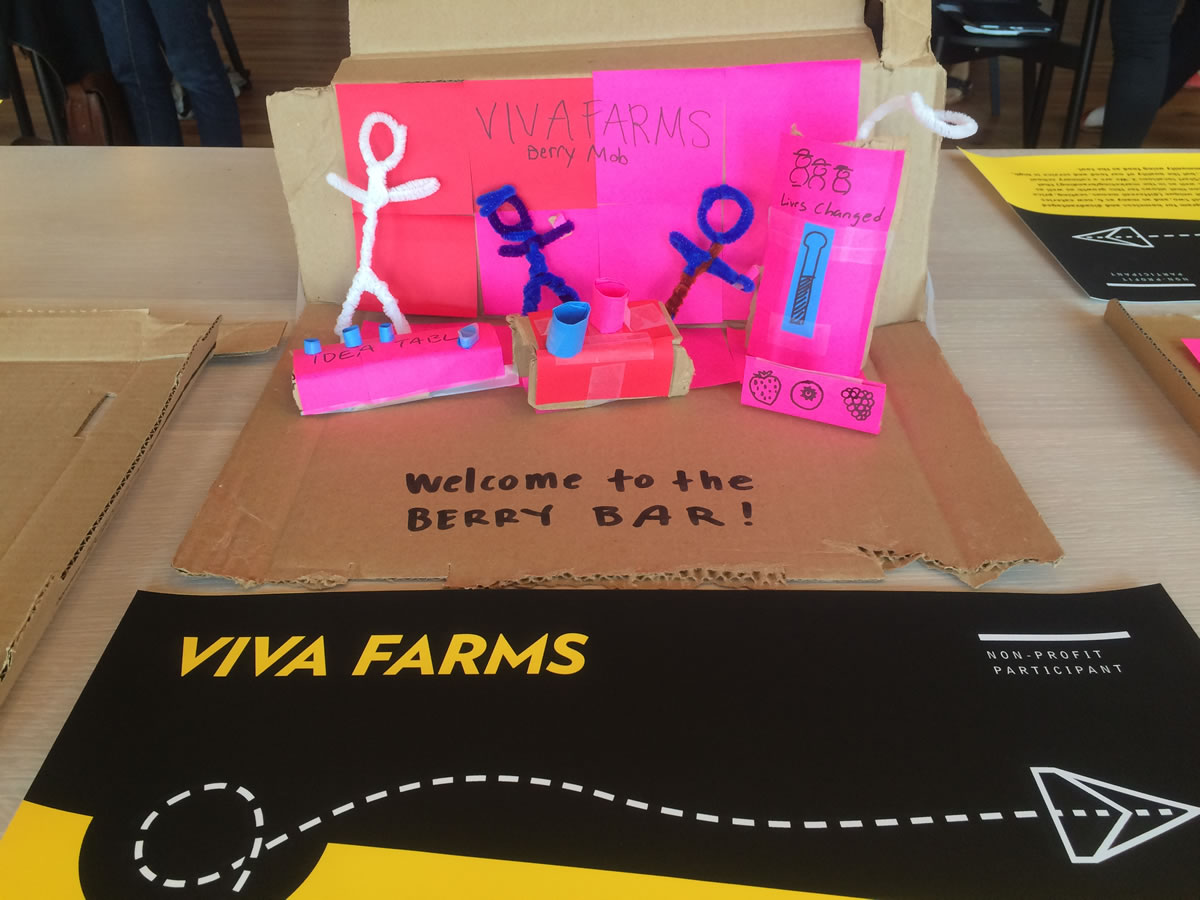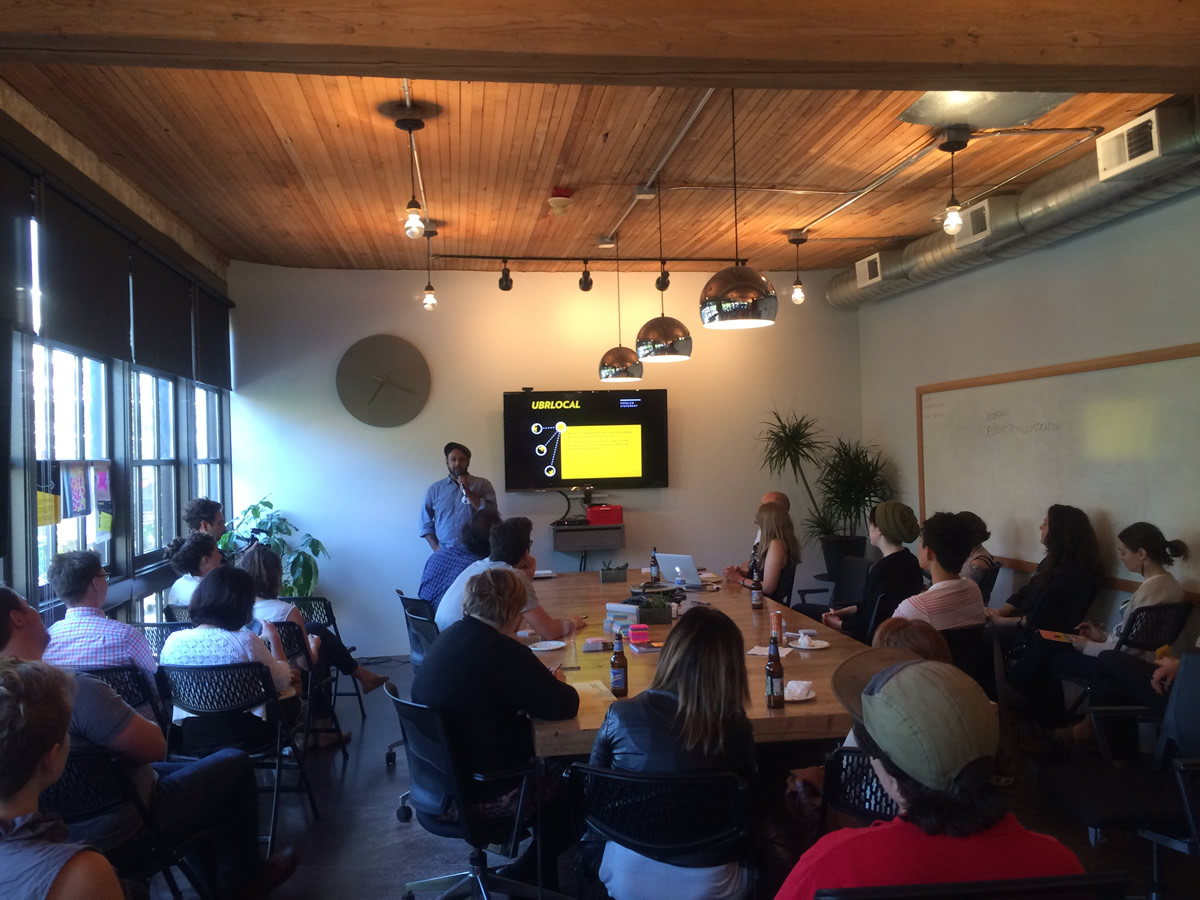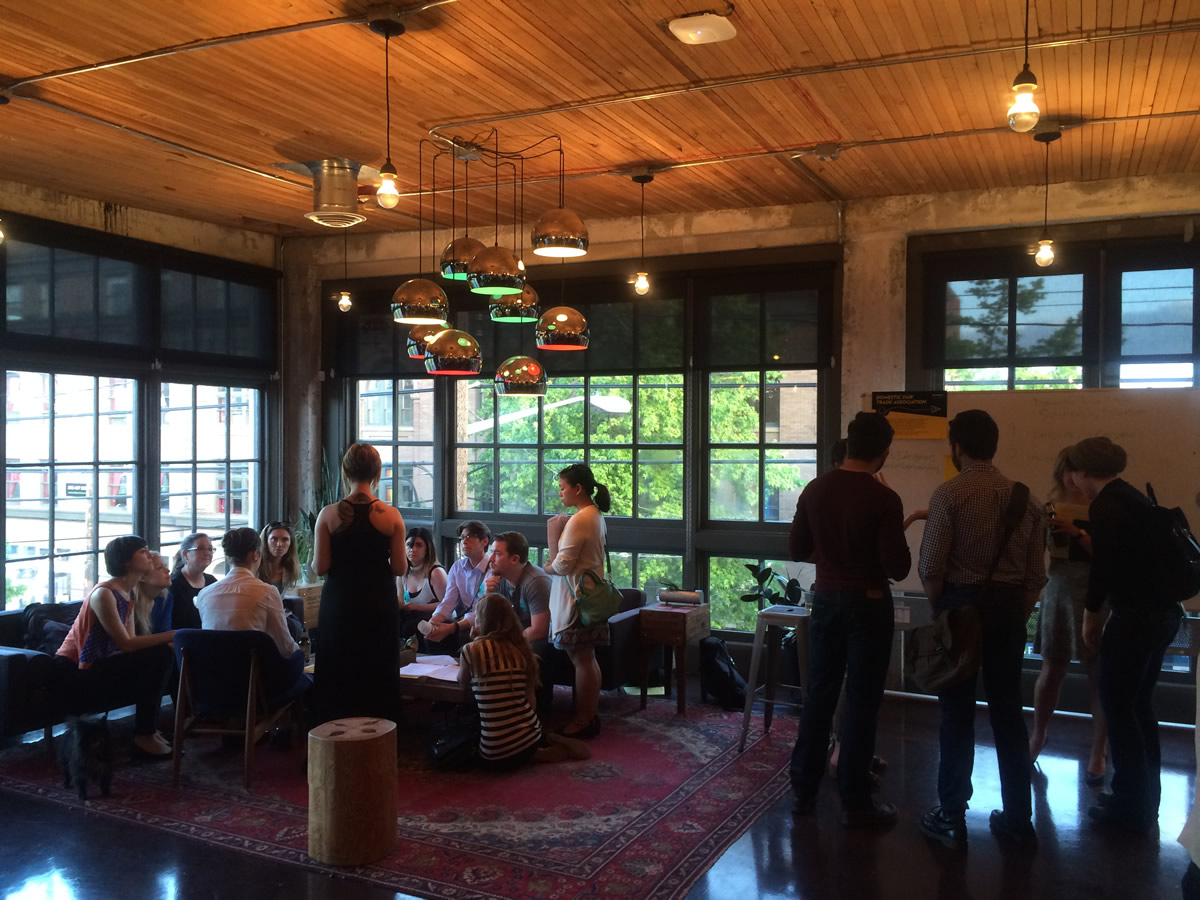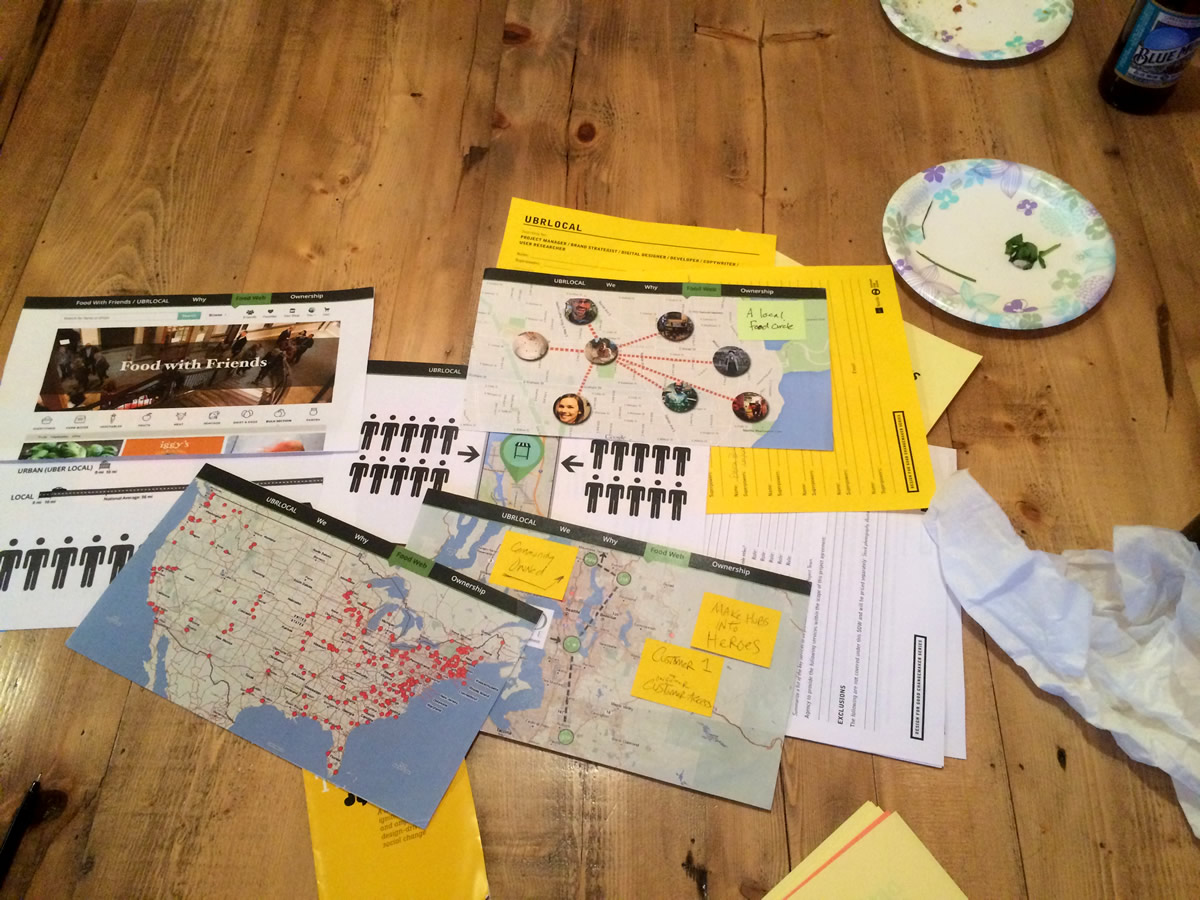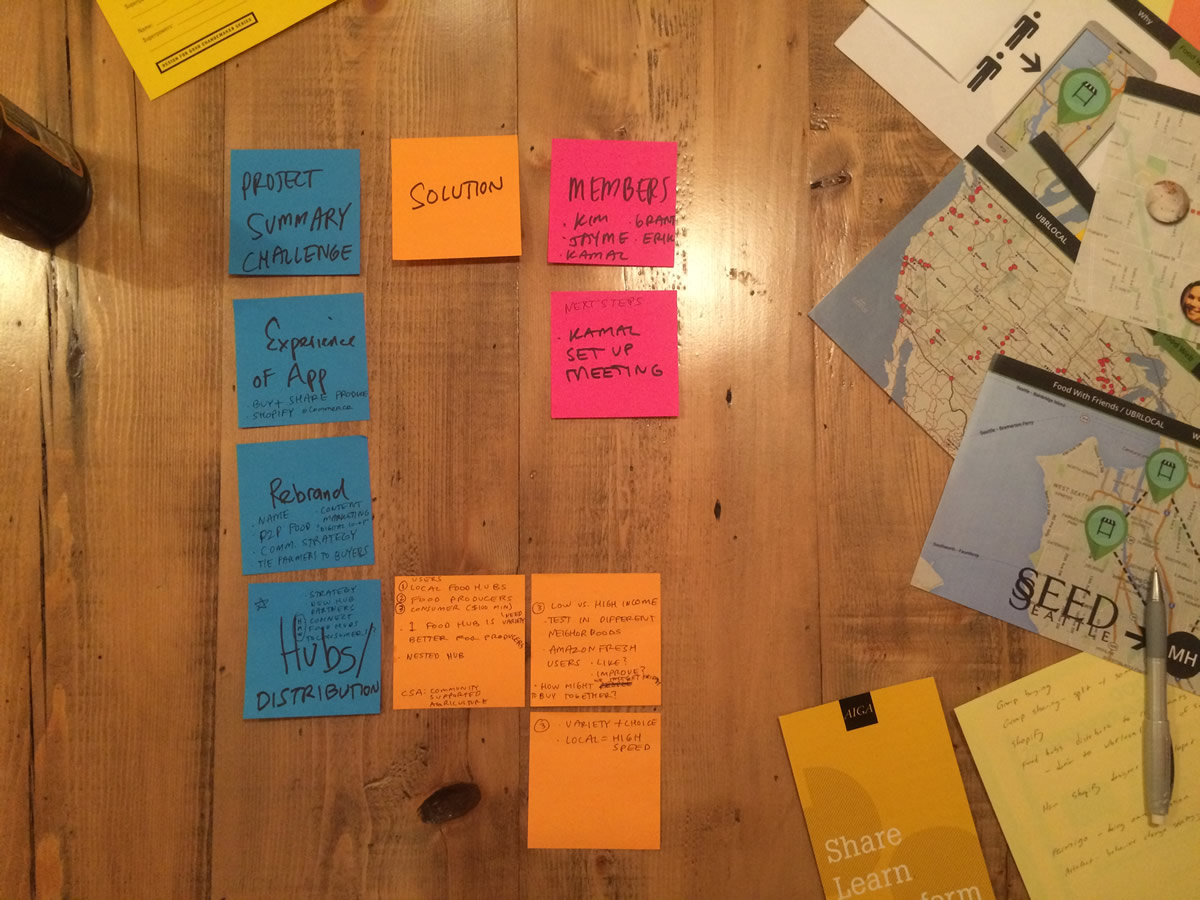What grows from the intersection of creativity & food?
Role
UX Designer
Timeframe
April – September 2015
Skills
An Open Mind
Willingness to Help
Software
Hands, Mind, & Heart
Design for Good
What is Design for Good?
Design for Good is a set of gatherings bringing together designers and strategists with food-related organizations to bring help to those that need it! It’s workshops, problem solving, and sharing awesome design powers to help local Seattle organizations… all around the topic of food.
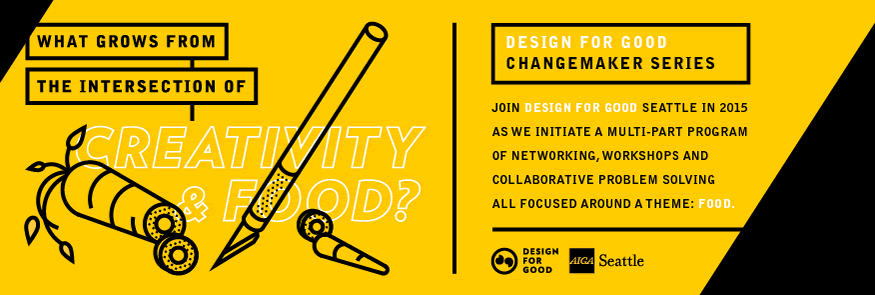
Workshops

Sprout
Sprout was hosted at the incredibly cool Artefact Group! The day was opened up with an inspiring session by Darrel Rhea of Rhea Insight. The room contained a wide variety of people, graphic designers, strategists, and UX designers – and people incredibly dedicated to social causes. Darrel gave a fabulous talk about what design is and how all of us getting together can make a difference.
Presentations were given by half a dozen leaders of food-oriented, nonprofit organizations and other companies in the local Seattle area dedicated to providing resources such as 501 Commons and Pyramid Communications.
We were then led through a group exercise to begin helping the nonprofits find focus. Groups of 5 or so selected one of the organizations and identified Primary Users, Secondary Users, Tertiary Users, and Influencers/Supporters… and diagram how they interact.
Photos by Nick Kelly.

Paper Airplane
Paper Airplane was hosted again at the (still) incredibly cool Artefact Group! After some great coffee, each nonprofit shared their problem statements. We then picked one of the community organizations to work with. I was completely inspired by Sarita Schaffer and her enthusiasm about Viva Farms and chose to team up with her.
Jeff Turkelson, from Artefact, shared about empathy. Erik Molano and BobbyHughes led the afternoon through a series of highly productive workshops. We worked on defining the problem for Viva Farms, interviewed Sarita, and dove into the 5 Whys. The day finished with some brainstorming and prototyping!
Viva Farms
• Land, equipment & infrastructure
• Education, training, & technical assistance
• Marketing & distribution support
• Start-up loans
What I Learned
It was amazing to have all this creative energy and such talented people around me. Our day began with Viva Farms needing a support kit for their “Berry Mobs,” summer events where they bring excess berries to Seattle for sale. The berries are in large quantities and need to be sold within a short time. If they’re not sold, the farmers lose out on their hard work… and their families depend on them.
Our Problem Changed
When we started the day, the problem was getting these berries sold. It’s a big problem and vague at best. The 5 Whys helped us find focus on something concrete… Sarita really needed a “hero evangelist,” that one person at each office location who will spearhead a Berry Mob event!
Brainstorm Differently
Bobby asked us to start our brainstorming session with a different twist. To get all our natural, negative responses uncorked, we began with a “Worst Ideas Post-It” session. It was fun, broke the ice, got us laughing, and yes, it did get a lot of negativity out. We then shifted gears to the good stuff. I’ll remember this one!
Prototype Differently
I’m so used to prototyping with tools like Axure, wireframes, and the closest I get to “arts and crafts” is paper mockups. Bobby asked us to give the problem-solving a shot with pipe-cleaners, pizza boxes, tinfoil, and tape. This really got me thinking outside the box. “OK, what do I do?” I found myself stuck. Luckily, we were in pairs, and as soon as my partner started taping and twisting, my brain got into gear. We certainly didn’t develop a social media kit, but we did come up with awesome ideas for a mobile Berry Mob setup!
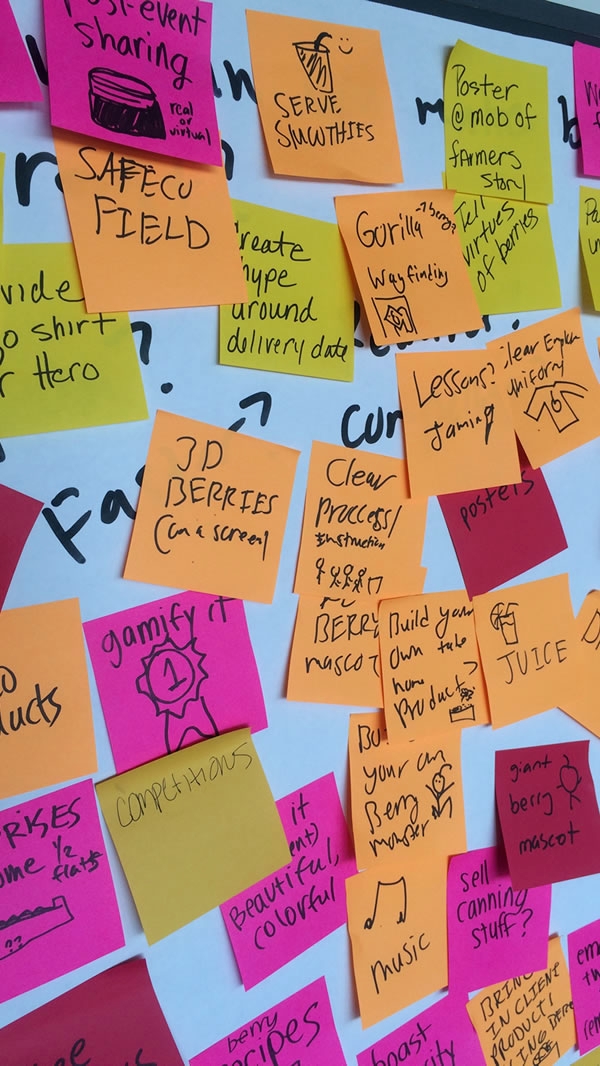

Matchmaking
Matchmaking was hosted at Substantial, and for a Thursday night, the event was packed! The night started with a talk about prototyping, testing, and why failing early is a good thing. Each nonprofit shared their problem statements and what they believed their needs were. We then had 30 minutes to go talk to each one and select who we wanted to work with through September. Facilitators made sure teams were staffed with well-rounded talent.
I’ve been drawn to UbrLocal and Kamal Patel’s passion for using technology to bring together small farm growers and consumers in the city. As soon as our team is officially formed, we’re off to the races!

